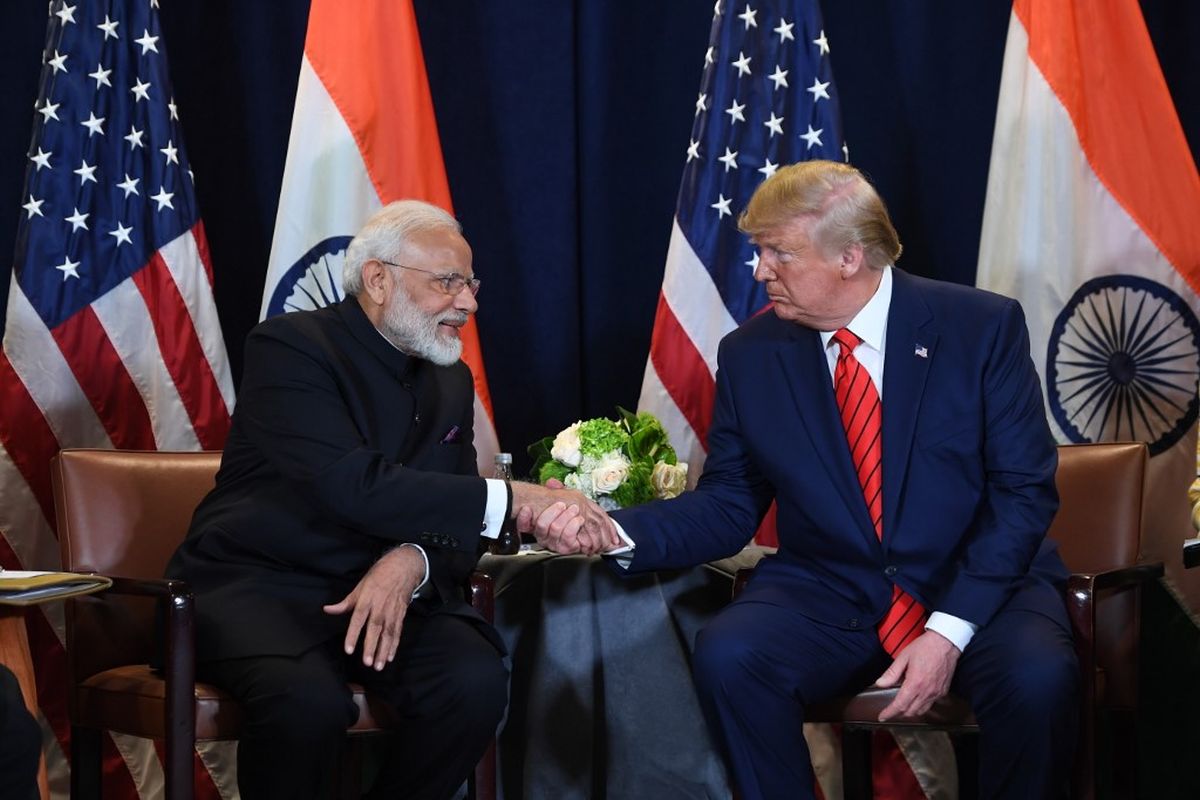The United States (US) President Donald Trump’s much awaited India visit will start in less than 24 hours, with the US stating on Friday that a trade deal with India is unlikely during President Donald Trump’s upcoming visit to the country as the concerns that led to India’s removal from the Generalized System of Preferences still persist.
The trade ties between the two countries have long been problematic but under “America First” President Donald Trump and “Make in India” Prime Minister Narendra Modi, they have worsened.
The dispute between the two countries dates back to 2019, when the US President had suspended India’s special trade designation after PM Modi had put price caps on medical equipments such as cardiac stents and knee implants. Indian Prime Minister had introduced new data localization requirement and e-commerce restrictions.
“The concerns that led to the revocation, suspension of India’s Generalized System of Preferences (GSP) access remains a concern for us. And to remind, it was really the failure of the Indian government to provide equitable and reasonable access to its markets in numerous sectors,” a senior administration official told reporters during a conference call.
“They’ve been hitting us very, very hard for many, many years,” President Trump said of India ahead of the 36-hour trip to Ahmedabad, Agra and New Delhi accompanied by Commerce Secretary Wilbur Ross and others.
The main issues of contention between the two countries on trade, which hit almost $145 billion in 2018, with the US deficit of $25 billion — much to Trump’s annoyance, according to news agency AFP is “Protectionism.”
As India’s import tariffs are among the world’s highest and under PM Modi, facing slowing growth, accelerating inflation and a widening budget deficit, this hasn’t changed.
PM Modi in November baulked at joining the Regional Comprehensive Economic Partnership (RCEP), a trade pact including Asia’s main economies and China.
In recent months, the Modi government has hiked duties on US imports, including on $600 million worth of Californian almonds as well as apples, steel and chemicals coming into Asia’s third-largest economy.
In its recent budget, the right-wing government raised tariffs on items such as shoes, children’s tricycles and furniture, irking Washington which cancelled a visit by trade envoy Robert Lighthizer, reports said.
Plans to force foreign firms to store Indian consumers’ data locally have also irked US businesses, as have e-commerce regulations hitting firms like Amazon and Walmart.
PM Modi’s “Make in India” drive is aimed at getting foreign companies to manufacture in the South Asian country and so reduce imports — mirroring Trump’s “America First” mantra.
New Delhi’s actions “have made the protectionism concerns in India even greater”, a senior US official said ahead of Trump’s arrival.
Last year, President Trump suspended India’s privileges under the decades-old US Generalized System of Preferences programme that had allowed it to ship $6 billion in goods duty-free.
The US wants to sell more medical devices like stents to India while US dairy farmers — a key voter base for Trump ahead of his re-election push in November — want greater access for their products.
Although, both India and US are cautious about China, as India vies for the same place as China to be the Asian giant in World economy whereas US sees it asa potential threat at the world stage.
President Trump’s visit will see deals in defence and other areas, including potentially the supply of six nuclear reactors, the fruit of a landmark atomic accord in 2008.
Observing that India is the fifth-largest economy in the world with massive energy needs, the official said the US is ready to help India meet those demands.
In 2016, energy exports from the US to India grew by 500 per cent to nearly USD 7 billion.
During the trip, the two countries will focus on defense and security cooperation to fight terrorism and promote a free and open Indo-Pacific.
The US wants an India that is strong with a capable military that supports peace, stability, and rules-based order in the Indo-Pacific region, the official said.
“Indeed, India is a pillar of our Indo-Pacific strategy, and we continue to work together to promote this vision of a free and open international system based on market economics, good governance, freedom of the seas and skies, and respect for sovereignty,” said the senior administration official.
President Trump along with his wife and First Lady Melania Trump will be on a two-day visit in India on February 24 and 25 at the invitation of Prime Minister Narendra Modi.
Apart from trade-deal,President Trump’s upcoming visit to India demonstrates the strong and enduring ties between the two largest democracies of the world, the White House said today.
“The President is going to India as a demonstration of the strong and enduring ties between our two countries,” a senior administration official told reporters.
‘The visit will be big on optics’says AFP, as in Ahmedabad, President Trump will address the ‘Namaste Trump’ event jointly with Prime Minister Narendra Modi at the newly built Motera cricket stadium. After the event, the US President and the First Lady will visit Agra, where they will spend about an hour at the Taj Mahal before the sunset.
This is Donald Trump’s first state visit to India and also a first standalone visit by a US President to India.
But the main “deliverable” that both strongmen want is a big trade deal, and in its absence they might instead strike a smaller agreement, according to press reports.
(With AFP inputs)










